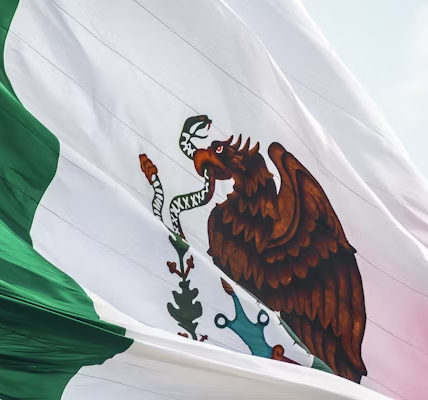Transylvania is a region that has captivated the imagination of people around the world for centuries. Nestled in the heart of Romania, this historical land is rich in culture, folklore, and stunning natural landscapes. Whether you’re drawn to its mysterious castles, fascinating history, or its stunning mountain scenery, Transylvania offers something for every traveler. In this article, we will explore the magic of Transylvania, covering its history, culture, tourist destinations, and much more.

A Brief Introduction to Transylvania
Transylvania is a region in central Romania, bordered by the Carpathian Mountains to the east and south, and the Pannonian Plain to the west. Historically, Transylvania has been a melting pot of different cultures, including Romanian, Hungarian, Saxon, and Hungarian influences. The region is known for its medieval towns, fortified churches, picturesque landscapes, and an intriguing mixture of myths and legends.
One of the most famous aspects of Transylvania is its connection to Bram Stoker’s fictional vampire count, Dracula. However, Transylvania is much more than just the dark world of the undead. This region has a rich history dating back to ancient times and boasts a unique blend of architectural, cultural, and natural treasures.
The Early Days of Transylvania
Transylvania’s history can be traced back to ancient times, with evidence of human settlements dating back over 40,000 years. Early inhabitants of the region included the Dacians, a people who lived in the area long before the Romans arrived. In 106 AD, the Roman Empire conquered the Dacian kingdom under Emperor Trajan, and the region became part of the Roman province of Dacia.
During the medieval period, Transylvania became an important region of the Kingdom of Hungary, with a strong Saxon and Hungarian presence. In the 13th century, German settlers known as the Saxons arrived in the region and played a significant role in shaping its development, particularly in terms of architecture and urbanization. The medieval cities of Transylvania, many of which still exist today, were founded by these settlers.
The Ottoman Influence and Habsburg Rule
In the 16th and 17th centuries, Transylvania was frequently caught in the power struggle between the Ottoman Empire and the Habsburg Monarchy. At various times, it was ruled by both empires, and this period of instability had a lasting impact on the region’s culture and development. The rise of the Habsburgs in the 18th century saw Transylvania become part of the Austro-Hungarian Empire, a political entity that lasted until the end of World War I.
After World War I, Transylvania was incorporated into Romania as part of the Treaty of Trianon. This move changed the demographic makeup of the region, with many Hungarians and ethnic minorities leaving or being displaced.
Geography and Natural Beauty
Transylvania is known for its breathtaking natural landscapes, making it a popular destination for nature lovers and outdoor enthusiasts. The region is surrounded by the Carpathian Mountains, a vast range that stretches through Central and Eastern Europe. These mountains offer excellent opportunities for hiking, skiing, and wildlife observation.
The Carpathian Mountains
The Carpathians are the backbone of Transylvania’s geography. This mountain range is home to lush forests, deep valleys, and numerous rivers and lakes. The region is known for its rich biodiversity, including brown bears, wolves, and lynx, making it a haven for wildlife enthusiasts. The Carpathians also feature many natural reserves and protected areas that allow visitors to experience the wilderness at its finest.
The Danube River and the Mureș River
The Danube River, one of Europe’s longest rivers, flows through the southern border of Transylvania, adding to the region’s charm. The Mureș River, which flows through the heart of Transylvania, is also a significant feature of the landscape. The presence of these rivers has been instrumental in the development of the region’s agriculture and trade.
Transylvania’s Caves and Grottos
The region is also home to some of Romania’s most impressive caves and grottos. The Bear Cave, located near the town of Chișcău, is famous for its fossilized remains of prehistoric bears. The cave is part of a larger network of caves in the Apuseni Mountains, offering an incredible opportunity to explore Romania’s underground world.
The Fascinating Castles and Fortresses of Transylvania
Transylvania’s castles and fortresses are a major draw for tourists. The region’s medieval architecture and well-preserved fortifications provide a glimpse into the past and transport visitors to another time.
Bran Castle – Dracula’s Castle
Perhaps the most famous castle in Transylvania is Bran Castle, often referred to as “Dracula’s Castle” because of its association with Bram Stoker’s fictional Count Dracula. Although Stoker never visited the castle, its dramatic position on a hilltop overlooking the surrounding countryside, combined with its medieval architecture, has made it a popular tourist attraction. Bran Castle is now a museum that showcases art and furniture collected by Queen Marie of Romania.
Corvin Castle – A Gothic Masterpiece
Another must-see castle in Transylvania is Corvin Castle (also known as Hunedoara Castle). This Gothic fortress is one of the largest and most impressive in Romania, with its high towers, defensive walls, and drawbridges. Corvin Castle was originally built in the 14th century and has a rich history involving the noble family of Hunyadi, whose legacy is tied to the castle.
In Summary
Transylvania is a region that captures the imagination like no other. With its fascinating history, awe-inspiring landscapes, and cultural diversity, it offers an unparalleled travel experience. Whether you are exploring the castles and fortresses, hiking through the Carpathian Mountains, or immersing yourself in the local culture, Transylvania promises to leave a lasting impression. As a land of mystery, myth, and natural beauty, Transylvania continues to be a top destination for those seeking adventure and discovery.
FAQs
Where is Transylvania located?
Transylvania is a historical region situated in central Romania, bordered by the Carpathian Mountains to the south and east. It is surrounded by Hungary to the west, and Moldova to the northeast. The region is famous for its medieval towns, castles, and rolling landscapes. The capital of Transylvania is Cluj-Napoca, a lively university city known for its cultural scene.
Is Transylvania part of Romania?
Yes, Transylvania is a part of Romania. It was historically a separate region and had been under the control of various empires, including the Roman Empire, the Ottoman Empire, and the Austro-Hungarian Empire. However, after World War I, Transylvania was incorporated into modern Romania as part of the Treaty of Trianon in 1920.
What to do in Transylvania?
There’s an abundance of things to do in Transylvania:
Visit Castles: Explore the legendary Bran Castle (often linked to Dracula), the gothic Corvin Castle, and the royal Peles Castle.
Explore Medieval Towns: Wander the charming streets of Sibiu, Cluj-Napoca, and Sighisoara, soaking in the rich history and beautiful architecture.
Hiking and Outdoor Activities: The Carpathian Mountains offer excellent opportunities for hiking, skiing, and nature walks, with breathtaking scenery along the way.
Cultural Experiences: Discover traditional Romanian folklore, visit museums, and try the local cuisine, such as sarmale (stuffed cabbage rolls) and ciorbă de burtă (tripe soup).
Is Transylvania safe for tourists?
Yes, Transylvania is considered a safe destination for tourists. Romania, in general, is a safe country with low crime rates, especially in tourist areas. Like traveling anywhere, it’s always important to remain vigilant, particularly in crowded places. However, Transylvania is known for its welcoming locals, stunning landscapes, and low levels of violent crime.
How can I get to Transylvania?
Transylvania is easily accessible from major cities around Europe and Romania. The best way to reach the region is via:
By Air: The closest airports are in Cluj-Napoca, Sibiu, and Târgu Mureș, with flights connecting to major European cities.
By Train: Romania has a well-connected train network, with regular services to Transylvania from Bucharest, Timisoara, and other Romanian cities.
By Car: Renting a car is a great option if you want to explore the region at your own pace. Transylvania is well connected by road, and the drive through its scenic landscapes is an experience in itself.
To read more, click here



